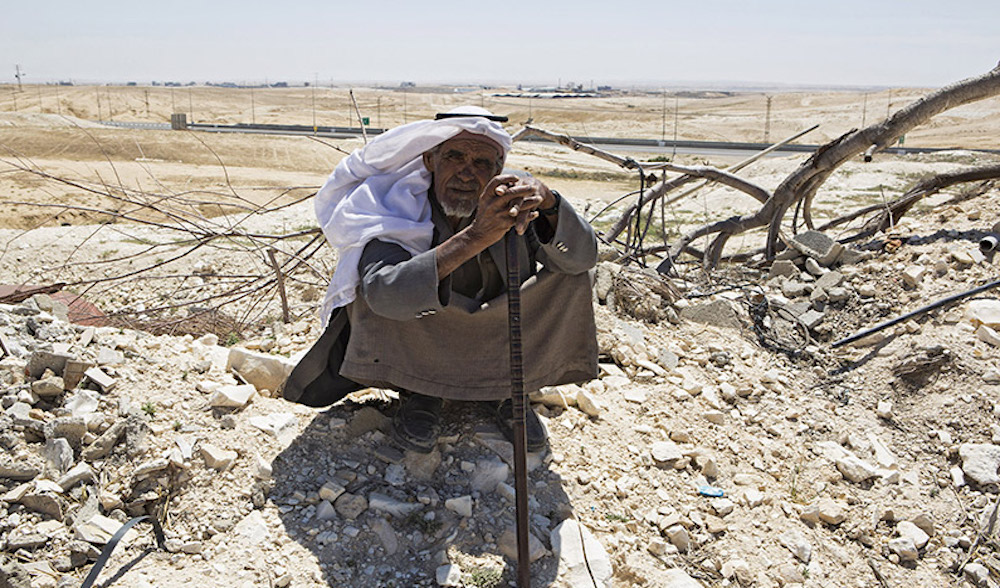FRANCESCO FIMIANI WRITES — Climate change continues to prove its catastrophic force. According to the National Oceanic and Atmospheric Administration (NOAA), every year since 2014 has experienced record breaking heat, with 2020 the second hottest year on record and the 44th consecutive year during which global land and ocean temperatures were above the 20th century average. This puts 2020 just behind 2016, the current hot record holder, with 2019 the third hottest year ever. NASA and Copernicus, which use similar measuring statistics, both put 2020 at a tie with 2016. And for the Middle East, it only gets hotter.
In an interview with Earthday, Professor Jos Lelieveld of the Max-Plank Institute for Chemistry in Mainz and the Cyprus Institute Nicosia, Cyprus said that “In the mostly cloudless Middle East, atmospheric mechanisms that temper climate change are weak and can even amplify the warming. In addition, evaporation from the sea causes high humidity, but rain remains absent … [and] heat waves will become more extreme, with important consequences for public health.”
The people experiencing all of these issues firsthand, even more than urban Arab populations, are the local indigenous Bedouin tribes spread throughout the Middle East.
The Bedouins are a nomadic people who have inhabited the region since long before the first Muslim Caliphates dominated and even before Roman and Mesopotamian city-state rule. They roam the region in seasonal migratory patterns looking for open land for their livestock to graze and for fresh drinking water.
This nomadic lifestyle has already been threatened by the prevalence of political instability and terrorism in the region, which has driven many Bedouins away from their original homelands. Now climate change is only compounding this downward trend.
As written in Al Jazeera in April of this year, per a reporting team that spent two days in the Muthanna desert of Iraq, a Bedouin tribesman said: “There’s no rain, and the land is dry. The grass has turned into desert. We have to sell some animals to buy food for the rest. This is what life has become.” The report detailed how families are forced to find and tend to larger areas of land, hoping to gather enough vegetation for them and their livestock; so a new source of conflict has arisen between Bedouin tribesmen and, says one, gone are the days when “your neighbor was like your brother. ”
Iraq is part of the fertile crescent, along with Lebanon, Israel, Palestine, Jordan, Syria, and the Nile delta region of Egypt. This region receives the most annual rainfall in the Middle East, which makes it the agricultural center of the region. But with a new report published saying that Iraq, and the surrounding countries, could see daily temperatures rise two to seven times faster than global temperatures, the fertile crescent — the original cradle of human life that fed and gave life to thousands of years of civilizations — is quickly becoming less of a cradle and more of a deathbed for its indigenous inhabitants.
According to the Max Planck institute, this region of Western Asia could experience 200 days of exceptional heat, with daytime highs of 50 degrees Celsius (120 degrees F) and average regional temperature increases of 4 degrees Celsius. Aridity in the region could increase by 50% if the current climate path isn’t altered, according to the World Bank, which leads to lower precipitation levels, longer drought periods and, worst of all, lower soil moisture across the few remaining patches of agricultural land there.
The result? Not only nomads, but all people who call Western Asia home will find themselves more at odds with their neighbors over who gets the few remaining resources climate change leaves them.
No one can predict the exact death toll of such a dramatic increase in temperatures in the region (of note: a 2003 heat wave in Europe claimed the lives of around 70,000 people and a 2010 Russian heat wave caused around 11,000 deaths). Nomadic groups that rely on nature for water, food, and shelter may disappear forever.
Unfortunately, the Bedouin tribes of Mesopotamia have never been high on the priority list of countries in the region, and it seems as though they won’t be any time soon.
What to expect? Increased aridity and the desertification of inhabited spots will push populations closer together, with larger population densities, flare-ups of existing ethno-cultural tensions, flooding of social services programs and increasing demands for food, water, electricity and housing in an area of the world that already frequently can’t fully satisfy these demands. Bedouin populations that move closer and closer to cities will likely be forced to abandon their lifestyle and become absorbed into urban culture, maybe even facing discrimination from the ethnic majorities of their countries.
And finally — maybe worst of all — without drastic solutions to the climate question there will be no point to continuing debates on conflict resolution, societal development and the stabilization of Middle Eastern politics. The predicament of the Middle Eastern Bedouins is not a unique niche problem, or just another call for activism. It’s a cautionary tale regarding how even urban and developed societies could suffer a similar fate. The Bedouins may live according to ancient traditions, but their fight for survival on an ever more scorched earth portends a dark future for the Middle East and calls for an urgent climate course change.


One Reply to “MIDDLE EAST: CAN THE PLIGHT OF BEDOUINS TURN UP THE HEAT ON CLIMATE CHANGE?”